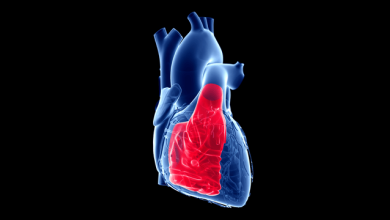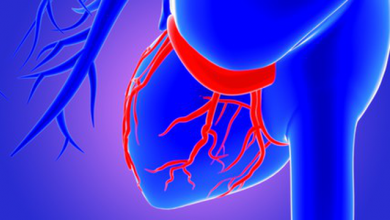Search results
Takotsubo Cardiomyopathy
Author(s):
Esha Sachdev
,
C Noel Bairey Merz
,
Puja K Mehta
Added:
3 years ago
Article
Author(s):
Konstantinos Bratis
Added:
3 years ago
Takotsubo syndrome (TTS) is an acute, profound, but reversible heart failure syndrome, usually but not always triggered by physical or emotional stress. To date, the exact pathogenic mechanism of this syndrome remains unclear; however, several hypotheses involving vascular mechanisms (i.e. abnormal coronary epicardial or microvascular vasoreactivity),1-3 endocrine and gender-related mechanisms (i…
View more
Author(s):
Mary N Sheppard
Added:
3 years ago
Takotsubo syndrome is an acute reversible heart failure syndrome, which is increasingly recognised by coronary angiography for patients with acute ‘cardiac’ chest pain.1 It is a distinct disease entity from acute coronary syndrome, although the initial presentation has similar features to either ST elevation myocardial infarction (STEMI) or non-ST elevation myocardial infarction (NSTEMI). Early…
View more
Author(s):
Abhiram Prasad
Added:
3 years ago
Takotsubo cardiomyopathy (TC) or syndrome was first described more than 2 decades ago by Dote and colleagues in Japan, but has since been increasingly recognised around the world.1 Takotsubo is the Japanese name for a the traditional octopus trapping pot that has a round bottom and narrow neck, resembling the appearance the left ventricle during the acute presentation (see Figure 1).2 Although,…
View more
Author(s):
Chiara Di Filippo
,
Beatrice Bacchi
,
Carlo Di Mario
Added:
3 years ago
Takotsubo syndrome (TTS) is a transient form of acute heart failure that mimics an acute coronary syndrome (ACS), with comparable acute adverse outcome.1 Many hypotheses have been formulated, but the pathophysiology of TTS is still not fully understood. Recently, it was demonstrated that specific alterations in neurological response and sympathetic activation after emotional stimuli are present…
View more
Alexander Lyon
Job title: Consultant Cardiologist
Author
Author(s):
Syed Khurram Mushtaq Gardezi
Added:
3 years ago
Today, in cardiology, acute coronary syndrome (ACS) is one of the most common presentations in hospitals. Usually, the history and presenting features of ACS are very typical. However, some patients have an atypical presentation, which can pose a problem for prompt diagnosis and management, leading to an overall increase in morbidity and mortality in such patients.
Case Presentation
A 61-year…
View more
Author(s):
Martin H Deininger
,
Juergen Buttler
Added:
3 years ago
The association of electrocardiographic (ECG) abnormalities and intracerebral, particularly aneurysmal, subarachnoid haemorrhage (SAH) is a well-known phenomenon. ECG alterations are observed in 50-100% of patients during the acute stage of SAH.1-3 Frequently, these effects are clinically not important. Some SAH patients, however, have structural cardiac damage with elevation of creatine kinase…
View more
Author(s):
Sivabaskari Pasupathy
,
Rosanna Tavella
,
Simon McRae
,
et al
Added:
3 years ago
Early coronary angiography performed during acute MI (AMI) identifies an occluded vessel in most patients with ST elevation MI (STEMI)1 and less frequently in those with non-STEMI;2 however, ≥90 % of patients with AMI have evidence of obstructive coronary artery disease.3 For these patients with overt coronary artery disease (CAD), the benefits of reperfusion strategies and cardioprotective…
View more
Author(s):
Ying X Gue
,
Rahim Kanji
,
Sabiha Gati
,
et al
Added:
3 years ago
Cardiovascular disease is the leading cause of death globally, with 85% of cardiovascular deaths attributed to acute coronary syndrome (ACS) and stroke.1 The development of coronary atherosclerosis and subsequent plaque disruption, predominantly from plaque rupture or erosion, is responsible for the majority of ACS presentations. Persistent occlusion of the coronary artery due to thrombus,…
View more















